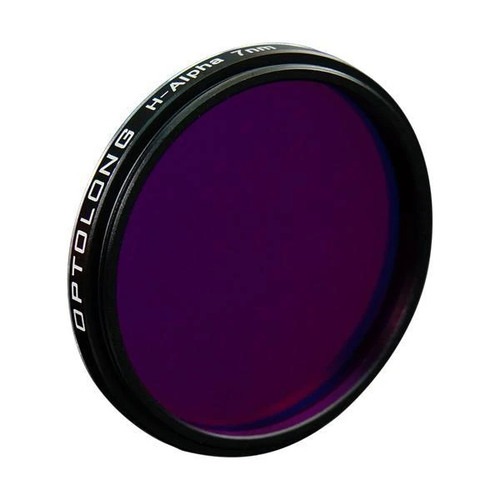Product Overview
Optolong Planetary Filters Kit
Optolong Planetary filters kit including UV/IR Cut, R, G, B and IR685 filter, 5pcs filters in total. These five filters are bundled by "Solar System Seal".
What filters are used for Planetary photography?
Photography of planets and deepsky imaging, both are fine to use the combination of monochrome camera and filters. But slightly different, planets photography will not use what deepsky image use like Ha, SII, OIII filter. Planetary photography using filters often are IR, UV, filters, etc.
The main aim is to capture the specific spectrum, such as rich carbon dioxide. One of the most common filter used is an infrared filter or IR filter
In nature, the longer the wavelength of light, the less affected it is by atmospheric seeing. Relatively, receiving the influence of red light, or infrared light is far less than the other bands.
Thus when imaging a planet, and to aid in reducing the influence of less than optimal seeing conditions, the use of an an IR filter is used to capture only infrared, or near-infrared light.
In visible light, planetary imagers will use the more traditional RGB filters. For Mercury, Venus, Uranus and Neptune, IR685 comes fist, and for Saturn, Jupiter, UV/IR Cut, R, G, B are good. However, the portfolio of IRRGB is popular.
IR685 Introduction
Optolong IR Pass685 filter is designed to block the most visible lights and can be used in IR-LRGB imaging to produce a sharper luminance image for the best planetary contrast as atmospheric seeing and distortion is much reduced at longer IR wavelengths. The advantage of the IR685 filter is to reduce the effects of atmospheric jitter.
The sensor of a CCD or CMOS camera is capable of detecting light in the 350nm -1100nm range including infrared wavelengths. Optolong IR685 cuts off the visible part of the spectrum and allows near infrared light to pass. In poor seeing conditions the light signal that is most effected by this atmospheric condition is rejected. It will highly improves images on visibility, contrast and details of planets and the moon. IR685 is usually used as a key factor of portfolio IRRGB.
Imaging Target:
IR685 is for imaging of bright planets, stars, and comet, like Uranus, Neptune, Jupiter, Saturn, Mars, Moon, et.
IR685 Spectrum for Reference

How to read the chart?
The horizontal axis is the Wavelength in Nanometers(nm).
The vertical axis is Transmission in %.
IR685 characteristic:
Tave: T>95%
Transmission area: 700-1100nm
Blocking are: 300-600nm
Blocking depth: blocked>99%
Surface quality: 60/40(Refer to MIL-O-13830)
Surface accuracy: ?/4
Parallelism: 30'
UV/IR Cut, R, G, B Filters Introduction
UV and IR light focus at a different point. Optolong UV/IR Cut filter is designed for ultraviolet and infrared wavelength blocking to improve sharpness of the image as most of the optics are designed for the visible spectrum. This will eliminate star bloat from your images.
Optolong RGB set divides the spectrum into its components red, green and blue.
RGB, parfocal: 1:1:1
Create images in their true original colors showing a wealth of natural detail;
Steep bandpass filters to eliminate UV and IR interference;
UV/IR Cut, Red, Green, and Blue filters to reproduce the star's color;
Main use
In visible light, astrophotographers are use traditional RGB fitters. If you have Optolong LRGB filters, just try R filter for moon photography, and expect good results. If you want more clear details of the Moon, then consider Optolong IR685 filter.
Suitable for color CMOS and CCD cameras and modified DSLRs;
Available to assist in focusing;
Act as an outstanding dust shield, which prevents the possibility of dust settling on the lens when long time exposure.
UV/IR Cut, R, G, B Filters Spectrum for Reference

How to read the chart?
The horizontal axis is the Wavelength in Nanometers(nm).
The vertical axis is Transmission in %.
The WHITE line shows the transmission of the UV/IR Cut filter. R filters line is shown in RED. G filter line is shown in GREEN. And the B filter line is shown in BLUE.









